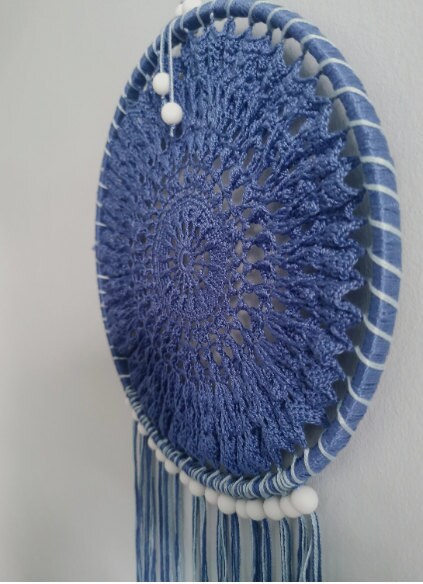The dreamcatcher is believed to have originated with the Ojibwe (Chippewa) people, a Native American tribe from the Great Lakes region. According to Ojibwe legend, the dreamcatcher was created by Asibikaashi, or the Spider Woman, who was a protector of children. As the Ojibwe people spread across North America, it became difficult for her to watch over all the children, so she instructed mothers and grandmothers to weave dreamcatchers to protect their young from bad dreams.
Traditional dreamcatchers were made from natural materials such as willow hoops, sinew, and feathers. The circular frame represents the circle of life and the interconnectedness of all beings. Within the hoop, a web-like design was woven, inspired by a spider’s web, intended to catch bad dreams while allowing good dreams to pass through.
Dreamcatchers hold a deep spiritual significance in Native American culture. The web is meant to filter out negative thoughts and bad dreams, trapping them until the first light of day, when they disappear. Good dreams, on the other hand, are believed to pass through the center of the web and flow down to the sleeper via the feathers attached to the bottom.Each part of a dreamcatcher has a symbolic meaning:
The Hoop: Represents the circle of life, unity, and the natural cycles of the earth.
The Web: Symbolizes protection, catching negative energy and bad dreams.
The Feathers: Act as a pathway for positive dreams and blessings.
Beads and Other Ornaments: Some dreamcatchers include beads woven into the web, which may represent captured bad dreams or spirits watching over the sleeper.
Although dreamcatchers originated with the Ojibwe people, they were eventually adopted by other Native American tribes, especially during the Pan-Indian movement of the 20th century. The Lakota people, for example, have a different interpretation of the dreamcatcher, seeing it as a representation of life’s choices rather than a filter for dreams.By the late 20th century, dreamcatchers became widely popular beyond Native American communities. They were sold at tourist markets, spiritual shops, and even mainstream retail stores, often mass-produced with synthetic materials. This commercialization led to mixed reactions; while some Native Americans appreciate the awareness and appreciation of their culture, others see it as cultural appropriation, stripping the dreamcatcher of its sacred meaning.
Today, dreamcatchers are used in various ways. Some people hang them above their beds to follow their traditional purpose, while others use them purely for decoration. Dreamcatchers have also been incorporated into fashion, jewelry, tattoos, and home decor, reflecting their appeal as a symbol of positivity, protection, and personal expression.Many people who use dreamcatchers believe in their ability to provide good energy and ward off negativity. Others appreciate them as a reminder of Native American traditions and spirituality. Some artists and craftspeople create dreamcatchers using traditional methods to preserve the authenticity of their meaning, while others experiment with modern designs and materials to create new interpretations.
As dreamcatchers have become commercialized, discussions about cultural respect and appropriation have emerged. While it is wonderful that people from all walks of life find meaning in dreamcatchers, it is important to acknowledge their origins and honor their significance. Supporting Native American artisans who craft dreamcatchers using traditional techniques is one way to appreciate their beauty while respecting their cultural roots.
Additionally, educating oneself about Native American traditions and the deeper meaning behind dreamcatchers fosters a more respectful appreciation. Rather than viewing them solely as decorative items, understanding their history allows people to connect with them on a deeper level.


